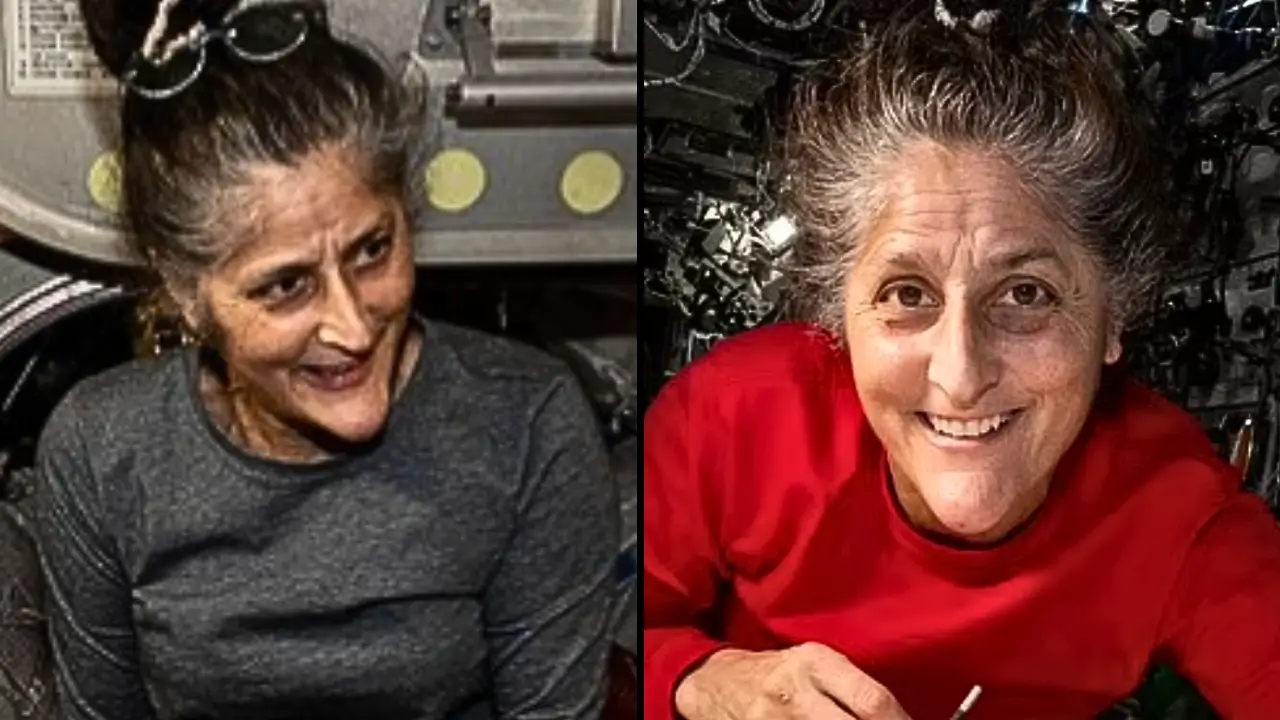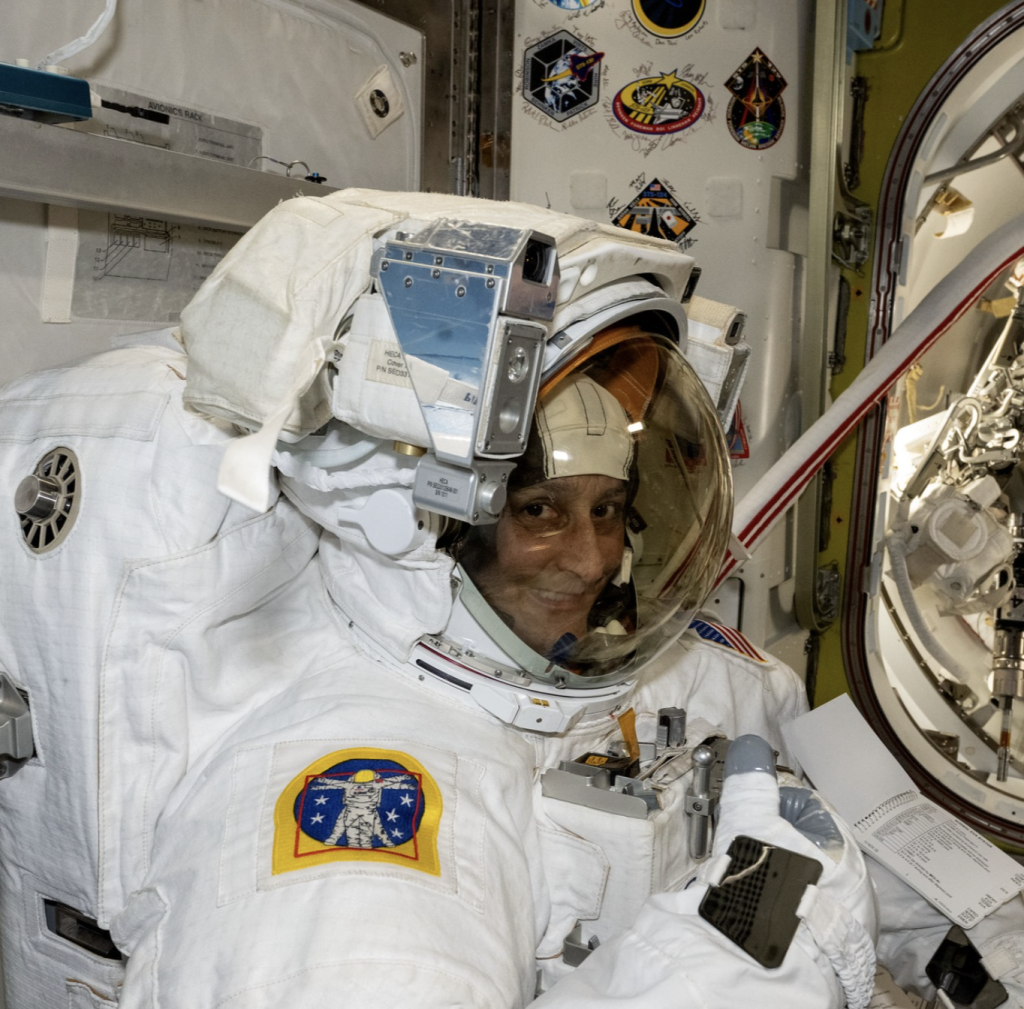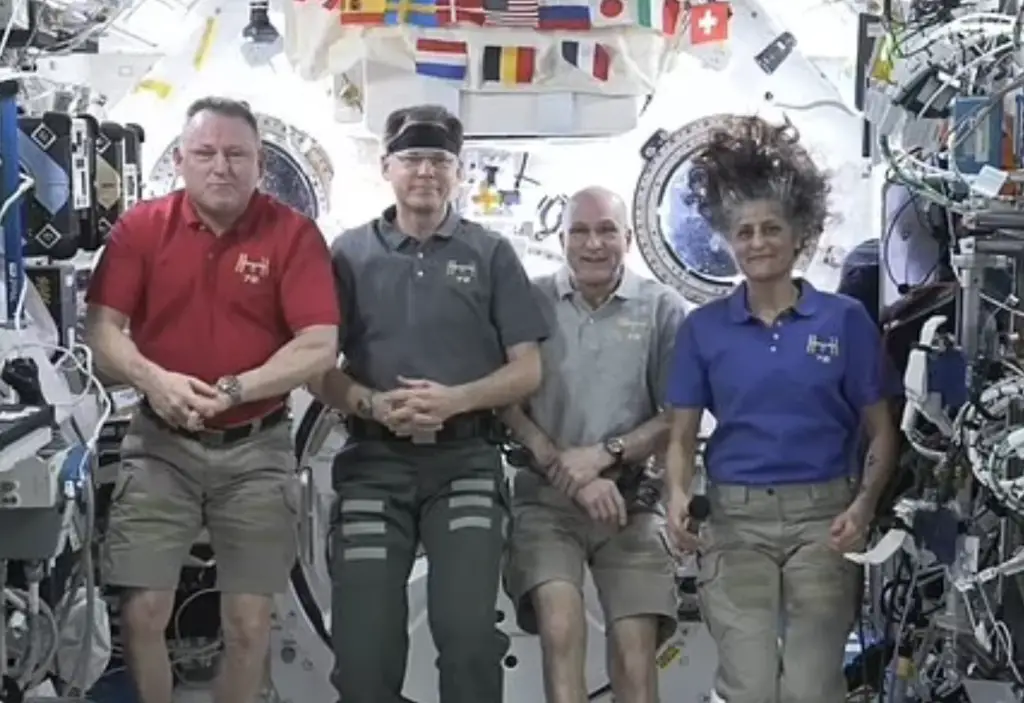
Credit: @iss/Instagram & NASA
Doctor Shares Devastating Update On Astronauts After Nine Months Stuck In Space
A doctor has shared a devastating update on the NASA astronauts stranded aboard the International Space Station (ISS).
Sunita Williams and her fellow astronaut, Barry Wilmore, originally planned to spend only eight days on the ISS after launching on June 5.
However, their return has been delayed due to technical malfunctions in the Boeing Starliner capsule that carried them into orbit.
The astronauts are now stuck on the ISS until at least late March, when they are expected to return on SpaceX’s Crew-9 spacecraft.
Now, a doctor has issued an update on the astronauts’ health.

President Donald Trump has addressed the situation, stating that ‘the two brave astronauts’ had been ‘virtually abandoned by the Biden administration,’ per MailOnline.
The 78-year-old called upon Elon Musk and SpaceX to facilitate their return. Musk responded by vowing to bring Williams and Wilmore back ‘as soon as possible.’
Although SpaceX was already assigned to return the astronauts, complications with Boeing’s Starliner delayed their departure.
The spacecraft experienced numerous technical issues, including helium leaks and thruster malfunctions.
NASA eventually deemed the capsule unfit for a safe return, opting instead to bring the astronauts home aboard Crew-9, which is currently docked at the ISS.
While the independent space agency had initially scheduled the Crew-9 return for February, this timeline was adjusted in December.
NASA explained that Crew-10 must launch to the ISS before Crew-9 can depart.
This shift means that Williams and Wilmore will have spent approximately ten months in space – two months longer than a standard ISS mission.

Astrophysicist Scott Manley has speculated on possible alternatives to expedite their return.
One approach would involve launching Crew-10 ahead of schedule, allowing Crew-9 to leave earlier.
However, SpaceX has not indicated whether this is feasible.
Another option would be allowing Crew-9 to depart before Crew-10 arrives, although this would go against NASA’s standard handover procedures.
These protocols ensure that departing astronauts can train the incoming crew to maintain smooth operations aboard the ISS.
The astronauts themselves have issued an update on the experience, including mention of their health.
Williams has revealed she’s lost the ability to perform certain basic physical activities after spending an extended period in microgravity.
During a video call with students at Needham High School in Massachusetts, she said: “I’ve been up here long enough, right now I’ve been trying to remember what it’s like to walk. I haven’t walked. I haven’t sat down. I haven’t laid down.”
Extended exposure to microgravity affects astronauts’ bodies in various ways, including muscle atrophy and bone density loss.
NASA states that without proper countermeasures, astronauts’ weight-bearing bones lose about one percent of their density per month.

Even everyday movements become difficult after prolonged weightlessness, making readjustment to Earth’s gravity challenging.
Despite growing speculation, neither NASA, SpaceX, nor the White House have confirmed any changes to the return schedule.
In the meantime, a doctor has issued a plan for the astronauts’ health following their return to Earth.
Dr Vinay Gupta, a pulmonologist and Air Force veteran, told MailOnline the pair will undergo a difficult rehabilitation process upon returning to Earth around March 19-20.
Doctors warn they will be unable to walk initially due to prolonged exposure to low gravity, requiring stretchers and immediate medical evaluation.
Rehabilitation will take at least six weeks and focus on regaining muscle mass, bone density, flexibility, and cardiovascular health.
Prolonged space exposure also increases the risks of radiation-induced health issues, including cancer and osteoporosis.
Psychological recovery may also be necessary due to emotional strain from their extended mission.
Related Article: The Moon Is Drifting Away From Earth And It’s Having A Major Impact On Time
Related Article: Astronaut Who Spent 178 Days In Space Shares The Big ‘Lie’ He Realized After Seeing Earth
Want more stuff like this?
Get the best viral stories straight into your inbox!